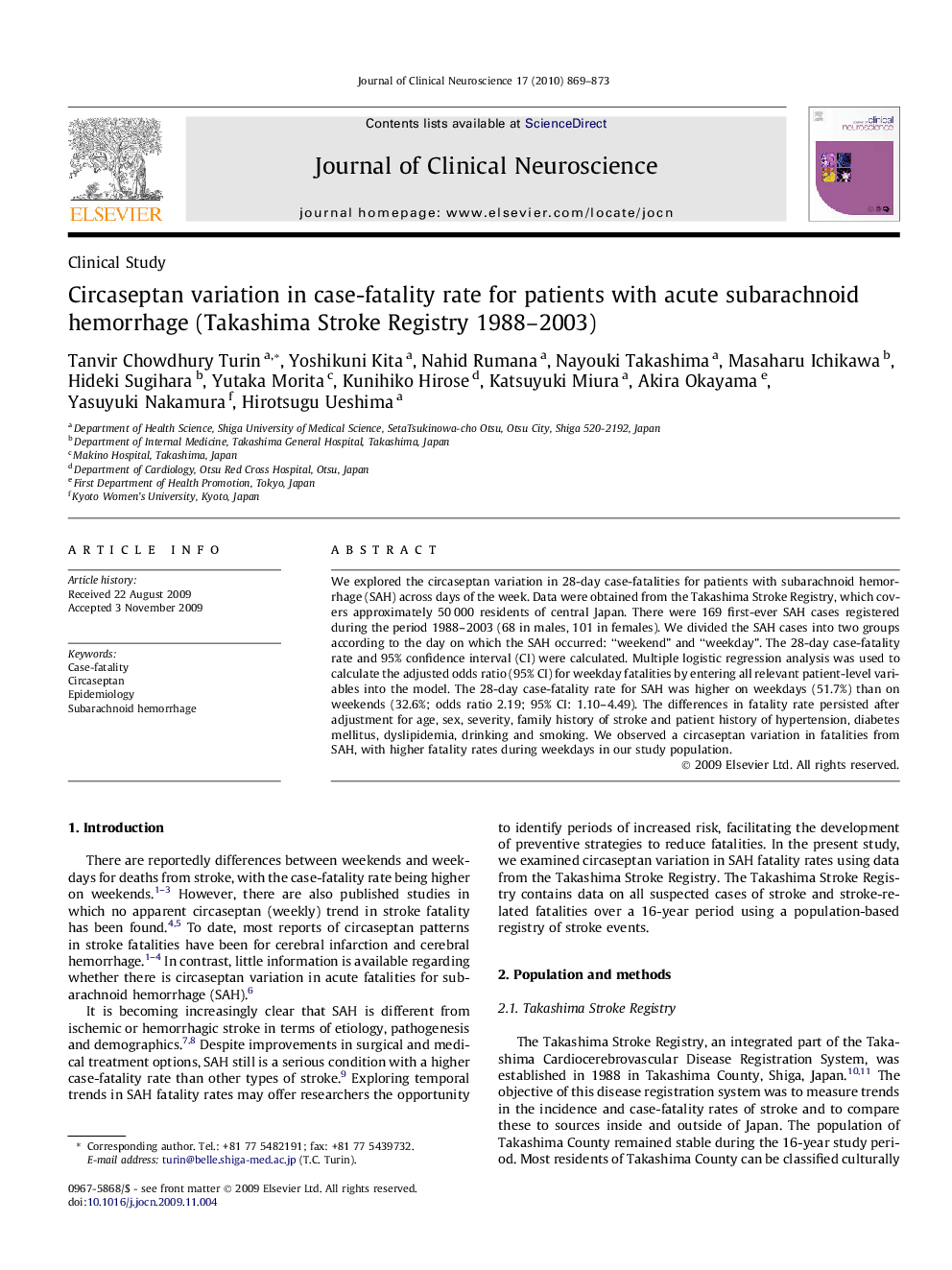| Article ID | Journal | Published Year | Pages | File Type |
|---|---|---|---|---|
| 3060976 | Journal of Clinical Neuroscience | 2010 | 5 Pages |
We explored the circaseptan variation in 28-day case-fatalities for patients with subarachnoid hemorrhage (SAH) across days of the week. Data were obtained from the Takashima Stroke Registry, which covers approximately 50 000 residents of central Japan. There were 169 first-ever SAH cases registered during the period 1988–2003 (68 in males, 101 in females). We divided the SAH cases into two groups according to the day on which the SAH occurred: “weekend” and “weekday”. The 28-day case-fatality rate and 95% confidence interval (CI) were calculated. Multiple logistic regression analysis was used to calculate the adjusted odds ratio (95% CI) for weekday fatalities by entering all relevant patient-level variables into the model. The 28-day case-fatality rate for SAH was higher on weekdays (51.7%) than on weekends (32.6%; odds ratio 2.19; 95% CI: 1.10–4.49). The differences in fatality rate persisted after adjustment for age, sex, severity, family history of stroke and patient history of hypertension, diabetes mellitus, dyslipidemia, drinking and smoking. We observed a circaseptan variation in fatalities from SAH, with higher fatality rates during weekdays in our study population.
